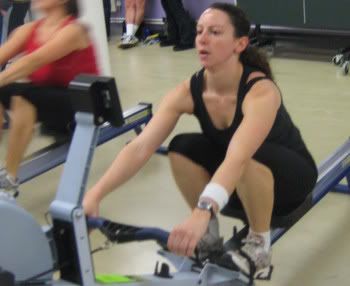
What it is: The term Proprioceptive Neuromuscular Facilitation sounds like some high-tech, life-saving medical procedure used by doctors on “ER,” but really, it’s a simple method of stretching. You get into a stretch position, tighten a muscle for about 6 seconds, allow it to relax, and then hold a static stretch for 10 to 30 seconds. In theory, when the muscle is stimulated by contracting, more of the muscle fibers are triggered to relax. Some PNF stretches work best with the assistance of another person; others you can perform yourself. The best way to be taught PNF stretches is from a trainer who is familiar with the technique.
Check out these pros to PNF stretching:
- Many studies, including some referenced by the ACSM, show that PNF stretching is a good way to increase your flexibility.
- The tightening part helps strengthen the muscle being stretched. This is especially true if the muscle is injured and you can’t do the bending and straightening necessary to perform strength-training exercises.
- Some studies have found that PNF stretching increases blood flow into joints and muscles, especially if they’ve experienced a recent injury.
- PNF teaches you about your muscles. If you’re doing a PNF hamstring stretch, you need to know where your hamstring is and how it feels to tighten this muscle. This knowledge also comes in handy when you perform weight training exercises.
The cons of this type of stretching are
- Many people find PNF stretching uncomfortable or even painful.
- You need extra motivation to tighten a muscle as hard as you can for six seconds. Not everyone has the strength or the patience for this.
- If you do PNF stretches with a partner, your buddy may be overenthusiastic and try to force the stretch beyond your capabilities, and then snap! Pay attention so that this doesn’t happen.
- Avoid PNF stretches if you have high blood pressure, because the stretches may result in sharp, sudden increases in blood pressure.
Sample PNF Stretch (see Figure): This PNF stretch loosens up your hamstrings. Lie on your back with your left knee bent and left foot flat on the floor. Have your partner kneel on one knee in front of your feet. Raise your right leg, and place the back of your heel on top of your partner’s shoulder. Have your partner place one hand on your thigh, just above your knee, and the other hand on top of your shin. Forcefully press your heel down into your partner’s shoulder, and concentrate on tightening your hamstring as much as possible for six seconds.
Relax the muscle, and have your partner gently push your leg up and back without allowing the knee to bend. Hold the stretch for 10 to 30 seconds and repeat the stretch four times. Switch legs. To do the previous stretch without a partner, wrap a towel or stretching strap around your ankle or the back of your calf, and then pull your leg toward you as you tighten your hamstring and press it downward.
 If you sit hunched over in a chair most of the day, you’re a good candidate for goofing up the seated cable row.
If you sit hunched over in a chair most of the day, you’re a good candidate for goofing up the seated cable row.









